 Early detection of breast cancer can make a huge difference in treatment outcome. Mammograms remain the gold standard in breast cancer screening, but they don’t always tell the whole story, especially for women with dense breast tissue or higher risk factors.
Early detection of breast cancer can make a huge difference in treatment outcome. Mammograms remain the gold standard in breast cancer screening, but they don’t always tell the whole story, especially for women with dense breast tissue or higher risk factors.
Ultrasounds and magnetic resonance imaging (MRI) can offer a clearer picture when traditional imaging falls short. These advanced imaging tools can reliably identify cancers that might otherwise go undetected, giving patients and doctors the best chance at early intervention.
This blog takes a closer look at how ultrasounds and MRIs can complement mammograms, providing a more thorough and effective strategy for breast cancer detection, especially for women at high risk.
Breast Ultrasound and MRI for Cancer Screening
Breast ultrasound and MRI offer enhanced imaging capabilities, providing more detailed views of breast tissue that can improve diagnostic accuracy, detect abnormalities that may have been previously missed, and reduce unnecessary biopsies.
By providing complementary views beyond standard mammography, these modalities improve early detection and serve as valuable tools in an exhaustive screening strategy.
Ultrasound Technology
Breast ultrasounds use high-frequency sound waves to gain a more detailed view of the breast’s structure. This technology is commonly used as a supplemental screening tool for women who are at a higher risk of breast cancer.
For instance, your provider may recommend an ultrasound if a mammogram suggests a change in the breast tissue, or a potential abnormality is discovered during a breast exam. Ultrasounds may also be recommended for women with dense breasts and those who are under 30 years old or pregnant.
What makes breast ultrasounds particularly useful is their ability to distinguish between fluid-filled cysts and solid masses. However, ultrasound technology does have its limitations. It is not adept at identifying microcalcifications, or tiny calcium deposits, which can be an early sign of breast cancer.
MRI
A breast MRI is a highly sensitive imaging test that generates 3D images of the breast using powerful magnets and radio waves. Unlike mammograms, this technology does not use radiation, making it a potentially safe option for monitoring high-risk patients who require frequent scans. The American Cancer Society recommends that women with a high risk of breast cancer get an MRI annually, often starting at age 30.
 Breast MRIs can be especially useful for finding small or hidden tumors that might be overlooked on a mammogram, especially those in dense breast tissue. They can also be used to evaluate the extent of cancer in patients who have already been diagnosed.
Breast MRIs can be especially useful for finding small or hidden tumors that might be overlooked on a mammogram, especially those in dense breast tissue. They can also be used to evaluate the extent of cancer in patients who have already been diagnosed.
However, breast MRIs are extremely sensitive and can sometimes produce false positives, meaning they may detect abnormalities that are not cancerous. There is also emerging data that suggests repetitive use of contrast dye for MRIs may lead to harmful effects in some patients.
Effectiveness of Ultrasounds and MRIs
While women’s health technologies have come a long way over the last decade, no tool is infallible. The overall effectiveness of ultrasounds and MRIs can differ based on a variety of factors. When used in conjunction with a mammogram, supplemental imaging techniques, such as ultrasounds and MRIs, can provide additional layers of detection that improve accuracy and facilitate early diagnosis.
Ultrasound Effectiveness
Regular breast cancer screening helps identify cancer earlier, helping to significantly reduce breast cancer deaths. Some studies suggest that early screening can reduce deaths up to 40%. Ultrasound can serve as a valuable tool for breast cancer detection, especially when used as a supplemental tool to evaluate suspicious areas found on mammograms or in dense breast tissue.
A systematic review found ultrasounds detect breast cancer with a sensitivity of around 80%. They are also particularly useful for guiding biopsies by pinpointing abnormal areas with high precision, as well as evaluating palpable lumps that don’t show up clearly on mammograms.
MRI Effectiveness
Breast MRIs are considered one of the most sensitive imaging methods, capable of detecting smaller and more aggressive cancers that may not be visible on mammograms or ultrasounds. They can be especially effective for women at high risk of breast cancer, such as those with BRCA1 or BRCA2 gene mutations. A breast MRI may also be recommended for women with a history of breast cancer to detect recurrences.
While MRIs are highly sensitive for detecting breast cancer, they should not be used as a sole screening tool. This technology can miss certain cancers that a mammogram would find and is also more likely to result in false positives that can lead to costly additional testing and unnecessary biopsies.
Improving Outcomes with Ultrasound and MRI
Combining ultrasounds and/or MRIs with mammograms offers a more thorough evaluation of breast tissue, increasing the likelihood of detecting abnormalities early. This is especially valuable for women at high risk, as these tools provide enhanced sensitivity and deeper insights for a more detailed and proactive approach to breast cancer screening.
Schedule Your Next Breast Cancer Screening
 Caring for your breast health is necessary for overall wellness, and early detection offers you the best chance for effective treatment and a positive outcome. Mammograms, ultrasounds, and MRIs each play an important role in keeping you informed and empowered. Take time to discuss your risk factors with your healthcare provider to determine the best diagnostic equipment for you.
Caring for your breast health is necessary for overall wellness, and early detection offers you the best chance for effective treatment and a positive outcome. Mammograms, ultrasounds, and MRIs each play an important role in keeping you informed and empowered. Take time to discuss your risk factors with your healthcare provider to determine the best diagnostic equipment for you.
If you’re due for a screening or have concerns about your breast health, contact Raleigh Gynecology & Wellness. We have an all-women team that focuses on patient comfort and privacy, and we understand the personal nature of gynecological care.
Our long-standing gynecological expertise and compassionate, patient-centered approach make us a trusted partner in your breast health journey for all stages of life. Early detection can save lives, and we’re here to provide the care and support you deserve.
